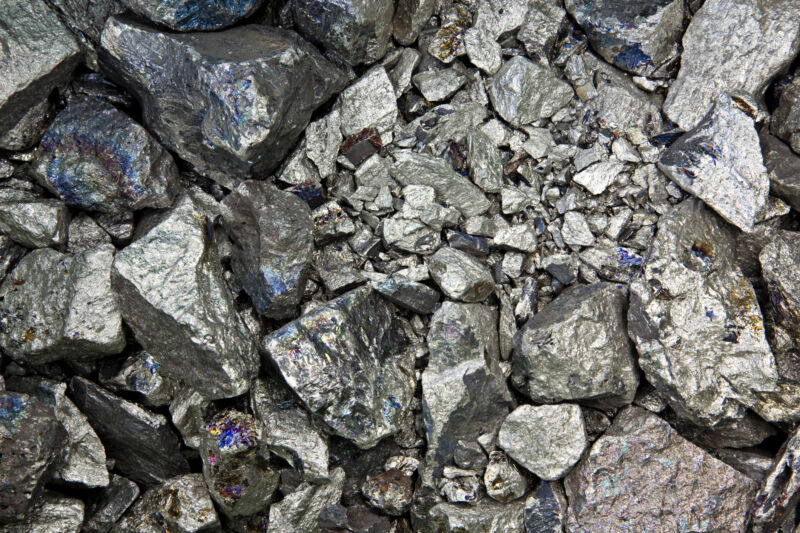
Almost every aspect of modern society relies on materials of limited quantity on Earth. In order to live within the limits set by our planet, we have to figure out how to make the most of what we extract and reuse whatever we have extracted. A new study released this week looks into how close we are to reaching that ideal for 61 different metals.
Along the way, its authors figure out how long different metals stay in circulation before they're lost and identify the stage at which those losses take place. While a lack of recycling is a major roadblock on the way to a circular economy, it's far from the only one. For many metals, including some critically important ones, we discard huge amounts that are present in the ores that we mine for different elements.
Mind your metals
Tracking that many metals through their entire life cycle is a huge task, but the authors were able to build on previous work by Japanese researchers who developed a software model called MaTrace. The model is designed to track the flow of materials from production to loss, estimating losses at each stage of the material's life cycle based on empirical data.
Losses are tracked at a number of points in a material's life cycle. For metals, these include the production of a raw material from ores, the metal's use in the fabrication of products, and its loss during the product's use. Finally, at the end-of-life stage of any product, the metal is either recycled or discarded as waste. MaTrace can also track the flow of the material through the recycling process (with its inevitable losses) and back into additional products.
To put this in concrete terms, we can turn to something simple like iron, which is mined from ores that are then processed. Both steps involve some loss of iron and any other metals that happen to be in the same ore. The iron is eventually incorporated into products, a process that can again involve losses as extraneous material is cut away—some of the excess here is also sent into the recycling process. There's also loss during use, which can be as simple as a fraction of the iron rusting away into the environment. Ultimately, a fraction of the iron-based products will be recycled, with the remainder being discarded into the environment.
Some of the numbers needed to track the fate of metals, like the efficiency of converting ore to metal, are easy to come by. Others, like the percentage of indium that ends up in electronics, are necessarily rougher estimates, and the researchers caution against treating any number here as a definitive estimate.
For their analysis, the researchers start with a kilogram of material and send it through MaTrace for either 1,000 years or until all of the metal is lost—whichever comes first. The authors performed individual analyses for each of the 61 metals and aggregated them into a number of groups: ferrous metals (iron and its relatives), non-ferrous metals, specialty metals, and precious metals. This allowed the researchers to pick up general trends for materials that are often used in specialized industries.
reader comments
117